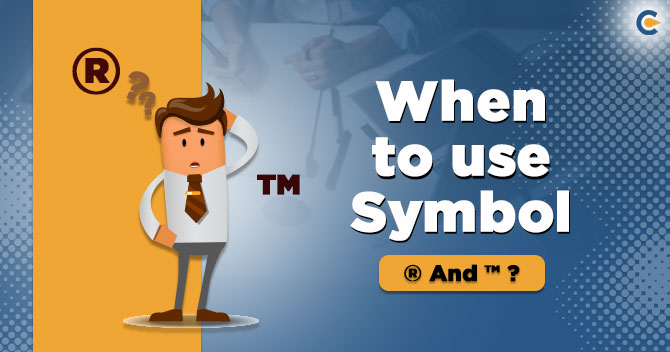Copyright law is a set of legal rules that protects authors, artists, musicians, and filmmakers’ original work from being used or copied without their permission. It gives the creators sole control over how their works are used, distributed, and displayed. By providing financial incentives to creators, these exclusive rights encourage the creation and distribution of new works which benefit society and will help our culture, promoting innovation and advancing knowledge. Scroll down to check more information regarding Copyright Disclaimer under Section 107.
The copyright law extends to sound recording, movies, software and other sorts of media along with literary, artistic, musical and dramatic works. The framework given by copyright law allows creators to protect their works and stop unauthorized duplication or use of their work. Additionally, the law describes the restrictions and exceptions to the exclusive rights which are given to the creators under this law, such as fair use, which permits the restricted use of copyrighted content without authorization in certain situations.
Because of copyright law, the creators, businesses and consumers can use and protect their works. Copyright violations can have adverse effects on both people and companies in terms of legal and financial ways, such as penalties, damages, and injunctions. Therefore, it is essential for everyone to respect and abide by copyright law to support a fair and creative society.
Section 107 of Copyright Law
The protection of the creator’s intellectual property rights and guaranteeing that they are adequately compensated for their work are both made possible by copyright law. However, there are some circumstances in which using content that is protected by copyright can be allowed without asking for permission or paying any royalty to the copyright owner. This is when the copyright act’s section 107 comes into play.
One of the most important provisions of U.S Copyright Law is section 107 of the Copyright act. It describes the fair use concept, which allows for the restricted use of copyrighted content without requesting consent from the owner of the copyright or violating their exclusive rights. This clause aims to strike a balance between copyright owner’s rights and the public’s interest in accessing and using protected works for specific tasks like commentary, criticism, education, scholarships, news reporting and research.
In order to determine whether a use of copyrighted content is fair, Section 107 lists four criteria:
- The nature and aim of use,
- The composition of the protected work,
- The quantity and importance of the pieces used in comparison to the entire work and
- The impact of the use on the copyrighted work in the potential market.
Although fair use is a legal notion, it is not an absolute standard, and each situation must be considered and evaluated on its own merit. For authors and users of copyrighted material, section 107 is a crucial tool for ensuring that their work is utilized in a way that is both morally and legally acceptable.
Explanation Of What A Copyright Disclaimer Is And Why It Is Used?
A copyright disclaimer is a statement that declares that the content being utilized is not meant to infringe on the rights of others. It acts as a legal notice to inform people that the item being used is either in the public domain, has been granted permission by the copyright owners, or meets the conditions for fair use.
Copyright disclaimers are intended to protect content creators and consumers from legal disputes or infringement charges. Incorporating a copyright disclaimer into works such as films, websites, and textual materials can help to avoid any copyright concerns by demonstrating that the material’s usage is legal. Copyright disclaimers are incredibly vital for authors who may utilize copyrighted content in their own work, such as music or videos. It guarantees that the original work’s authors are informed of how and why their content is being utilized.
Copyright disclaimers can also serve as a reminder to readers, viewers, or users of the work that the content is protected by copyright law and cannot be used without permission. Creators can educate others on the value of intellectual property rights by incorporating a copyright disclaimer.
Features of Copyright Disclaimer
A copyright disclaimer is a valuable tool that authors can use to safeguard their work while also informing others of their ownership rights. It is essential to make sure that a copyright disclaimer is precise, informative, and free of plagiarism. The following are some characteristics of a copyright disclaimer:
1. Clear Statement of Ownership: A copyright disclaimer should include a concise and explicit statement stating that the work being utilized is the owner’s intellectual property.
2. Disclaimer Purpose: The disclaimer should describe the reason for its usage, such as claiming fair use under Section 107 of the Copyright Act.
3. Fair Use Explanation: Include a brief explanation of the principle of fair usage and how it applies to the use of the work in the disclaimer.
4. Description of the Work: The disclaimer should contain a description of the work being utilized, including the title, author, and any other pertinent data.
5. Use Restrictions: The disclaimer should explicitly specify the work’s use restrictions and the conditions under which it may be utilized, such as for educational purposes, commentary, or criticism.
6. Citation & Attribution: A citation or attribution to the original work should be included in the disclaimer, recognizing the author’s contribution and avoiding plagiarism.
7. Contact Information: The disclaimer should contain the owner’s contact information, such as an email address or website so that interested parties can get in touch with them for additional information.
Explanation of Common Misconceptions about Copyright Disclaimer under Section 107
Although the fact that copyright law can be complicated, Section 107 of the Copyright Act gives some advice on what constitutes fair use. However, there are several widespread misunderstandings concerning Section 107 copyright disclaimers. Here are some of the most common misconceptions:
- Inclusion of a disclaimer stating that the content being utilized is copyrighted does not automatically qualify it for fair use under Section 107. While acknowledging that the material is copyrighted might be helpful, it does not guarantee that the use is fair.
- While utilizing a smaller quantity of copyrighted material is occasionally considered fair use, it is not a surety. The standards for evaluating fair use under Section 107 are broad and need a comprehensive examination of the usage’s purpose and impact.
- While non-profit and educational uses are acceptable under Section 107, they are not the only ones. Any use that fits the standards of fair use, regardless of the intent, can be declared fair.
- While giving acknowledgement to the copyright owner is usually a good practice, it does not always ensure the usage fairly. Section 107’s fair use requirements consider the purpose and impact of the usage rather than merely whether credit was given.
- Fair use is not a general exception to copyright law: Fair use is a defence against accusations of infringement, not an exception to copyright law. The Section 107 fair use criteria are intended to give direction on what sorts of uses can be considered fair, but they do not overrule the copyright owner’s exclusive rights.
Process of Copyright Disclaimer
The process of making a copyright disclaimer includes the following points:
1. To check whether you need a copyright or not
2. Insert a suitable symbol to make it clear that the specific part is copyrighted.
3. Mention the year of publication and the name of the copyright holder.
4. Copyright notice and a rights statement should be included.
5. Copyright declaration must be included in the work itself.
Advantages of Copyright Disclaimer
- Protection against copyright infringement claims:
By including a copyright disclaimer, the author or user of a copyrighted work can be legally protected from accusations of copyright infringement[1], and compensation and the likelihood of lawsuits can be decreased as a result.
- Provides notice of ownership:
By making it clear to others that the author or owner of the work asserts their exclusive rights to it, a copyright disclaimer can serve as a notice of ownership of the copyright in work.
- Clarifies permitted uses:
A copyright disclaimer might specify the kinds of uses that are permitted by fair use or other copyright law exceptions, making it more straightforward for others to decide whether or not they are entitled to sue the work.
- Promotes responsible use:
Including copyright, a disclaimer can promote the responsible use of works protected by copyright because it spells out precisely what constitutes legal use.
Disadvantages of Copyright Disclaimer:
- Not a substitute for permission:
A copyright disclaimer does not serve as a substitute for written permission from the copyright owner to use a work. A copyright disclaimer could not be a sufficient defence against infringement charges if permission is necessary.
- Not universally recognized:
Since each country has its own copyright laws and fair use provisions, a copyright disclaimer that is accepted in one place could not be accepted in another.
- Limited effectiveness:
Since it is up to the courts to decide whether a specific use of a copyrighted work is allowed or not, a copyright disclaimer does not provide a guarantee against copyright infringement claims.
Conclusion
Section 107 of the copyright act specifies the standards for determining whether a particular use of copyrighted content is considered fair. Clearly indicating that the user is intended for fair use, including a copyright disclaimer under section 107, can assist creators in avoiding copyright infringement accusations. It is critical to follow best practices when making a copyright disclaimer and ensure that it adequately conveys the intended use of the copyrighted work.
It is also important to dispel prevalent myths regarding copyright disclaimers, such as the belief that they automatically render a use fair or that they are needed by law. Understanding the facts behind these myths can assist producers and consumers in making educated decisions regarding the usage of copyrighted material.
Understanding copyright law and fair use, in general, is critical for anybody who develops or consumes media. Creators can avoid legal concerns, and consumers can make informed judgments about the media they consume by following the principles outlined in Section 107 and incorporating a clear copyright statement where necessary.
Also Read:
A Complete Overview On Copyright Protection For Software
Ownership And Authorship Of Copyright In India
Copyright Registration In India – Process, Requirements And Duration











